10 observations from the first 2 weeks of the NBA season
It's too early in the NBA season to draw any sweeping conclusions, but we've seen enough to at least mark some trends down as interesting developments to monitor. Here are 10 notable observations from the first two weeks:
Nuggets are in trouble

Nikola Jokic is still the best player on the planet, and the Nuggets will remain at least a playoff team because of it, but Denver's time as a surefire contender may be over. The only reason the Nuggets have a respectable record right now is because they piled up four wins against expected tankers in Toronto, Brooklyn, and Utah. In two of those four contests, Denver needed overtime (and 40-plus minutes of Jokic magic) to escape victorious.
The talent drain since the 2023 championship parade has caught up to them. After watching Kentavious Caldwell-Pope, Bruce Brown, and Jeff Green walk as free agents over the last two summers, head coach Michael Malone has been left to fill the void with youngsters Christian Braun, Julian Strawther, and Peyton Watson. Braun's a solid two-way starter, but Strawther and Watson aren't ready to be key contributors on a title team, despite each player's exciting future.
Meanwhile, Braun's impressive play can't hide the fact he's unable to replicate Caldwell-Pope's 3-point shooting volume, and the Nuggets were already the league's most 3-point averse team before losing KCP. To no one's surprise, the addition of Russell Westbrook hasn't helped in that regard, either. The notoriously poor shooter is shooting 20.8% on 3.4 3-point attempts per game. Even more concerning, the future Hall of Famer is shooting 33.3% inside the arc.
Finally, Jamal Murray - currently sidelined with a concussion - has looked like a shell of himself since an ankle injury and other ailments slowed him last spring and during the Olympics. That's especially concerning given the five-year, $158.3-million extension Murray recently signed. Between Murray, Michael Porter Jr., and the recently extended Aaron Gordon, Denver has roughly 70% of the projected salary cap committed to that trio for at least the next two seasons.
If anyone can lift the tide, it's Jokic. But if the first two weeks of the season are any indication, the Nuggets need way too much out of the three-time MVP just to break even. - Joseph Casciaro
Bucks are in more trouble

Glass half full: It really does seem like Damian Lillard's bounced back from a down offensive year; age hasn't yet fully eroded Brook Lopez's mountainous rim-protecting capabilities; the starting lineup has outscored opponents by 5.5 points per 100 possessions; and the Bucks collectively showed signs of turning a corner in a home-and-home set against the unbeaten Cavaliers this week, going down to the horn in both games despite missing Giannis Antetokounmpo for the second one. We saw encouraging signs in those games from Andre Jackson Jr. and AJ Green, the only two guys who pass for prospects on this team.
Glass half empty: Moral victories are of zero use to the all-in Bucks. Those losses to Cleveland dropped them to 1-6, a record that includes double-digit losses to the Bulls, Nets, and a Grizzlies team missing two starters. Milwaukee ranks bottom 10 on both sides of the ball and 24th in net rating, despite having a fully healthy rotation apart from Khris Middleton. The bench has been a tire fire.
Far from being solved, all the Bucks' defensive issues from last year have either persisted or worsened. This team is still tissue paper at the point of attack, still sorely lacking in athleticism and physicality on the wing, and still a scrambled mess in transition. Giannis is one of two significant plus defenders on the roster, but his impact on that end appears to be waning faster than that of 36-year-old Lopez, who hasn't looked up to the task of putting out all the fires the defensive arsonists in front of him keep igniting.
Middleton's yet to suit up, a fact that could go in the glass-half-full category - can't judge the team without him, everything will look different when he's back! - but probably belongs here because it's getting harder and harder to believe the 33-year-old can return from surgeries on both ankles and fix this.
Look, the Bucks will eventually get back on track to some extent. At some point Gary Trent Jr. will start hitting shots, Middleton will return, and the offense will significantly improve. Giannis started slowly at the defensive end last season too, before turning it on in the second half. As long as he and Lillard avoid extended layoffs, it's hard to imagine Milwaukee not being firmly in the mix for a top-six seed.
But fighting for a playoff spot very much wasn't the bar the front office set when it surrendered control of all its draft picks through 2030 and went deep into the luxury tax to put this team together. Nor is it something Giannis is going to be satisfied with. Ticktock. - Joe Wolfond
OKC's unique defense could be historic
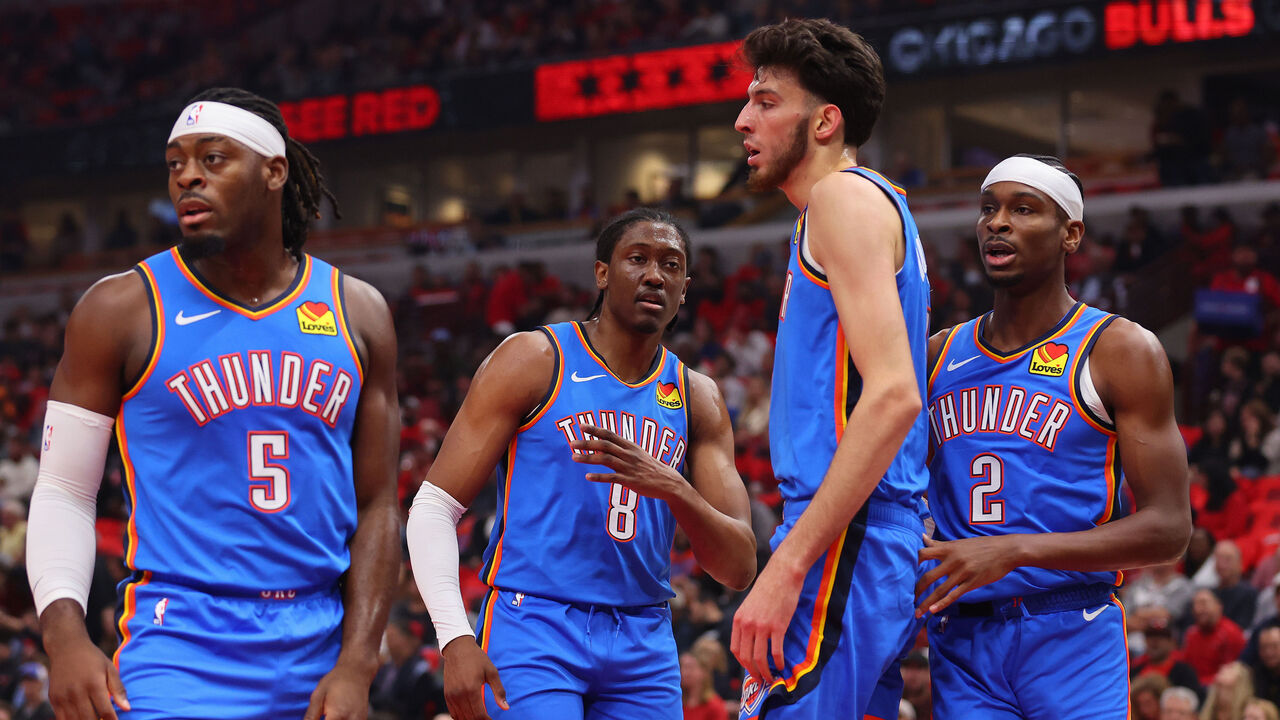
The Oklahoma City Thunder are the class of the Western Conference, winning all six of their games by double digits, despite the fact their offense has been decidedly pedestrian. The reason they've been so dominant: they have a non-garbage-time defensive rating of 93.7, which is 8.8 points per 100 possessions better than the second-ranked Warriors, and 20 points per 100 better than league average, per Cleaning the Glass. For reference, the best era-adjusted defense of the last 60 years belonged to the 2003-04 San Antonio Spurs, who allowed 8.6 fewer points per 100 than average.
The Thunder obviously aren't going to sustain this level of stinginess - they've gotten lucky with opponent jump shooting, and faced only two above-average offenses so far - but their beautiful marriage of personnel and scheme makes it very plausible they'll continue to be not only the best defensive team in the NBA this season but one of the best defensive teams of all time.
For starters, they have the most daunting array of perimeter defenders in years. Imagine you're a lead ball-handler going up against OKC. You get to start the game being hounded by Lu Dort, and when he goes to the bench, you have the privilege of being pestered by Alex Caruso. Every so often the Thunder will throw a curveball at you, and let you do your worst against young hellhound Cason Wallace. If you're lucky, you may get a cross-match or force a switch so you can instead see someone like Shai Gilgeous-Alexander, Jalen Williams, or Aaron Wiggins - three huge, handsy guards averaging a combined 6.7 steals per 36 minutes. Fun stuff!
If you manage to shake one of those guys via a screen or dribble move, and then manage to evade the rest of them swiping at your dribble around the nail, you get to meet final boss Chet Holmgren, averaging 3.1 blocks and holding opponents to 39.7% when he challenges their shots at the basket. The Thunder as a team have allowed the league's lowest opponent field-goal percentage inside the restricted area, and rim-protector extraordinaire Isaiah Hartenstein hasn't even suited up for them yet.
Having Holmgren as a safety net on the back line allows OKC's perimeter defenders to be ultra aggressive, whether that means pressuring the ball for 94 feet, digging down on drives and post-ups, or springing random traps on unsuspecting foes. The upshot: OKC's turning opponents over an absurd 20.6 times a game, which includes ripping more steals (13.1) than any team in recorded history. The Thunder still aren't rebounding the ball well (another area Hartenstein will help), and yet they're still dominating the possession battle because of their plus-eight turnover margin.
If there's reason to think regression is coming, it's that all their pressure and swarming help results in an unusually precarious shot profile for such an elite defense. The Thunder are conceding the league's seventh-highest rim rate and the second-highest rate of corner threes - the two highest-value shots on the floor. But they're surviving the rim attempts because of both Holmgren and the effective low-man work of their oversized guards, and they're surviving the corner threes because their fluid help principles mean they're the rare team that can actually say they concede those threes to the "right shooters."
Their opponent shot profile ranks them 27th in location effective field-goal percentage allowed, per Cleaning the Glass. In actual eFG% allowed? They rank first, as with most defensive categories. What a ridiculous team. - Wolfond
Celtics taking 3-point shooting to another level

Boston's shot profile is absurd, even for the modern age. The Celtics have taken more than 55% of their shots from 3-point territory, which would shatter a six-year-old record held by the 2018-19 Rockets (set at the height of the Harden-D'Antoni partnership).
The Celtics are merely the poster boys for a league-wide explosion of 3-point attempts, which had actually leveled off in recent years. Between the 2019-20 and 2023-24 seasons, league-average 3-point attempt rate hovered between 38.4% and 39.9% of total field-goal attempts. That average is up to 41.8% through two weeks of 2024-25. Only five teams were taking 40% or more of their shots from behind the arc when the Rockets set the record for 3-point attempt rate six years ago, and that number grew to 12 teams last season and currently stands at 20.
Boston aside, no team personifies that shift quite like the Magic, who ranked 25th in 3-point attempt rate last season, when 36.9% of their shot attempts came from downtown. Orlando's seventh-ranked 3-point attempt rate now stands at 46.5%. But thanks to a Paolo Banchero injury and a bottom-five ranking in 3-point efficiency, the Magic are on pace to finish with a bottom-10 offense for the 13th straight year. - Casciaro
KAT broke Knicks' defense

Defensive regression was expected in New York, where the Knicks turned Julius Randle and Donte DiVincenzo into Karl-Anthony Towns after losing Hartenstein to free agency and Mitchell Robinson to injury. Still, with all-world wing stoppers OG Anunoby and Mikal Bridges leading a Tom Thibodeau-coached team, Knicks fans surely expected something better than this.
It's early, but New York's top-10 defense from last season has slipped all the way to 20th, according to Cleaning The Glass' data, which filters out garbage time and late-quarter possessions likely to end in heaves.
While the team's defensive issues extend beyond Towns, the big man does have to bear the brunt of it. His defensive mobility has been exploited from the opening minutes of opening night, when the Celtics mercilessly hunted him on screening actions. Meanwhile, his rim-protection has been virtually nonexistent. No, literally: Opponents are scoring almost any time Towns is guarding the rim. KAT ranks dead last among 73 players to contest at least 25 shots at the rim, with a defensive field-goal percentage of 90%, according to NBA.com.
To put that in perspective: The worst rim-protector among 73 players who contested the most shots last year came in at 76.6%, and it was a guard (Dejounte Murray). No center allowed even a 70-plus defensive field-goal percentage at the rim last year. - Casciaro
AD, Mobley, and rising big-man primacy
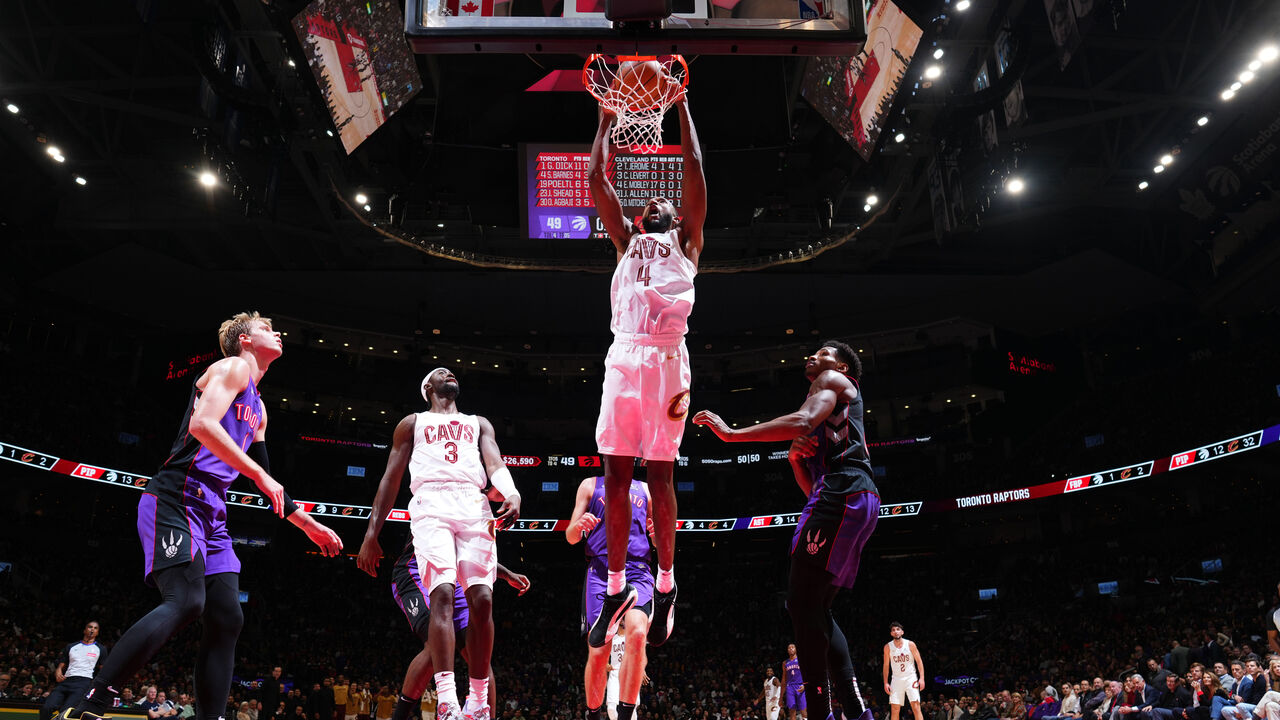
The NBA's in the midst of an offensive evolution, with more teams running more and more action through big men at the top of the floor. Against the backdrop of that changing environment, two new coaching hires took over talented but stylistically inert teams, arriving with mandates to empower and amplify their versatile bigs. In making more prominent use of Anthony Davis and Evan Mobley, JJ Redick and Kenny Atkinson have shown they can unlock some of the dormant potential in Los Angeles and Cleveland, respectively.
Let's start with Davis, not only outpacing his own previous output but leading the NBA in scoring and playing like one of the two or three best players in the world. At 3.4 minutes per game, he's by far spending more time with the ball in his hands than in any other season of his career. His average elbow touches have surged from 4.9 last year to 6.4 this year, and he's driving the ball six times a night compared to 3.8. As a result, LeBron James is spending less time with the ball in his hands than in any season on record, which is probably a wise move for the sake of preserving the soon-to-be 40-year-old.
This is the first year of their partnership in which Davis has a higher usage rate than James, and the gap's substantial (32.4% to 25.3%). Davis has rewarded his coach's trust with monstrous offensive production: 32.6 points on a career-best 64.4% true shooting, thanks to hitting 61% of his 2-pointers and going to the free-throw line 12 times a game. He's being empowered as a high-post playmaker as well, even if his assist numbers don't show it yet.
Atkinson hasn't centered Mobley in his offense to the same extent, which makes sense both because Davis is much better than Mobley and because Mobley has more shot creation around him. But the uptick and changing shape of the 23-year-old's usage has been nearly as notable. Like Davis, Mobley is handling the ball a lot more than ever. He's nearly doubled his rate of drives (from 4.7 to 8.9 per game), and has also more than doubled his frequency of transition possessions, thanks largely to a new edict from Atkinson that he race the ball upcourt himself after grabbing defensive rebounds.
One big similarity in the way Mobley's and Davis' roles have changed is that they're both being used as handlers in inverted ball-screen actions a lot more frequently. They're each finishing more than two possessions per game as pick-and-roll handlers, four times as many as either averaged a season ago.
Crucially, on top of benefiting the players individually, these changes have clearly benefited both teams' offenses. While there are other factors involved and it's still early, for now the Lakers have jumped from 15th to sixth in offensive efficiency, while the Cavs have leapt from 16th to second. - Wolfond
Pelicans are cursed
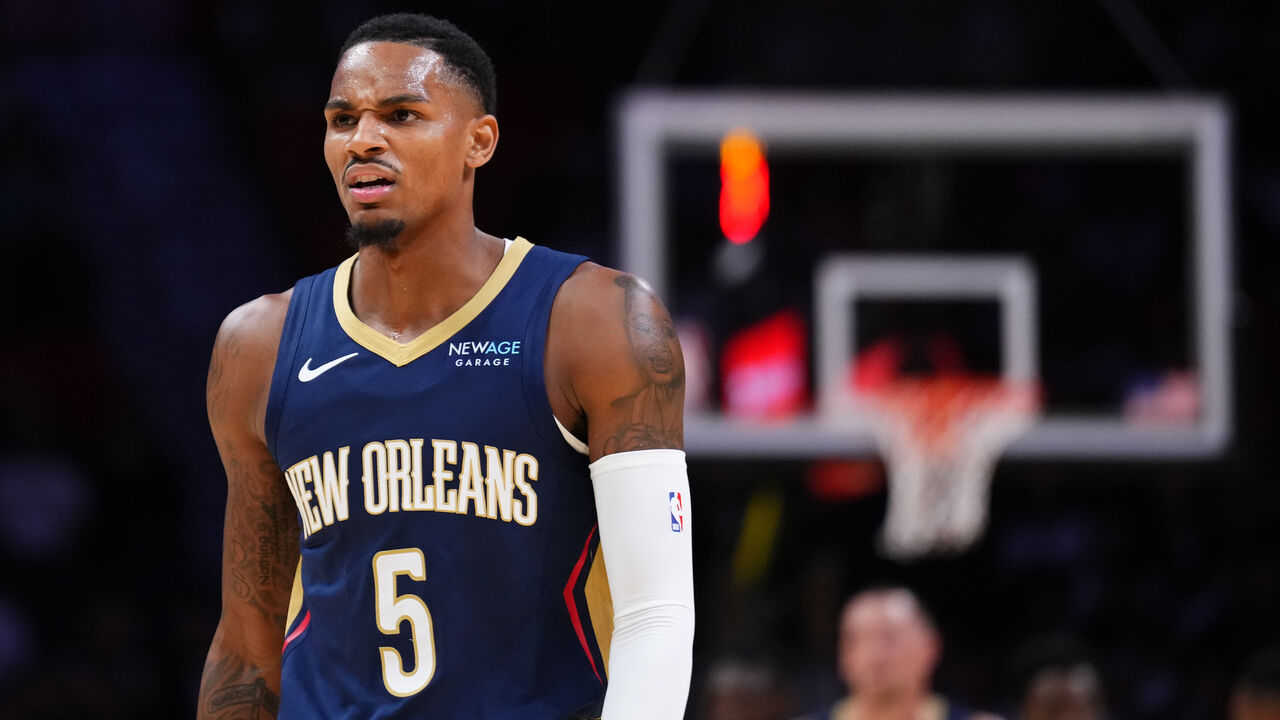
Allow me to throw one of the wildest and most random stats of the early season at you:
Of the 20 players who've defended the most rim shots in the league so far, there are 19 big men ... and Jordan Hawkins, the Pelicans' 6-foot-5 sophomore guard with a barely plus wingspan who is absolutely nobody's idea of a stopper. Unsurprisingly, Hawkins hasn't been effective at altering those short-range attempts, with opponents converting on 78% of them (which is still better than what KAT's allowed, but I digress). So, how and why is this happening?
It doesn't seem to be the result of a schematic quirk from the Pelicans' defense, or even opposing offenses organizing themselves in a way that puts Hawkins in low help position (though there's been a bit of that). From what I can tell, it's mostly just been him getting attacked off the bounce, with guys either getting a step on him or muscling him under the basket for lightly contested layups. And that's happened a lot because Hawkins has played a lot, logging more minutes than any Pelican other than Brandon Ingram.
It's easy to suggest the Pelicans, who rank 28th in defense, should simply play Hawkins less. Unfortunately, they don't have that option, because - stop me if you've heard this one before - their whole team is injured. They came into the season with a clear top six in their rotation and through two weeks those six players have combined to miss 26 games.
Trey Murphy strained his hamstring in training camp, Murray fractured his hand on opening night, and CJ McCollum and Herb Jones both went down in the season's fourth game with adductor and shoulder injuries, respectively. Zion Williamson was miraculously spared until a bout of hamstring soreness sidelined him for the team's last two contests. Ingram's the only member of that core group to have appeared in all eight, and he wasn't even supposed to be here.
As bad as the Pelicans have been on defense, they'd be even worse on offense if not for the heavy dose of Hawkins, who is by far their best and highest-volume 3-point shooter in McCollum's and Murphy's absence. Even with Hawkins playing 32 minutes a night and canning 38% of his 6.9 threes, the team ranks 25th in 3-point attempt rate and 22nd in offensive rating. Heck, even Hawkins missed their last game with back tightness.
New Orleans was going to be one of the league's most interesting teams this year because of all the questions it had to answer about its small-ball lineup permutations, but we haven't even gotten a chance to see those lineups in action. It feels like we never will, at this rate. - Wolfond
Rookie class living up down to its billing
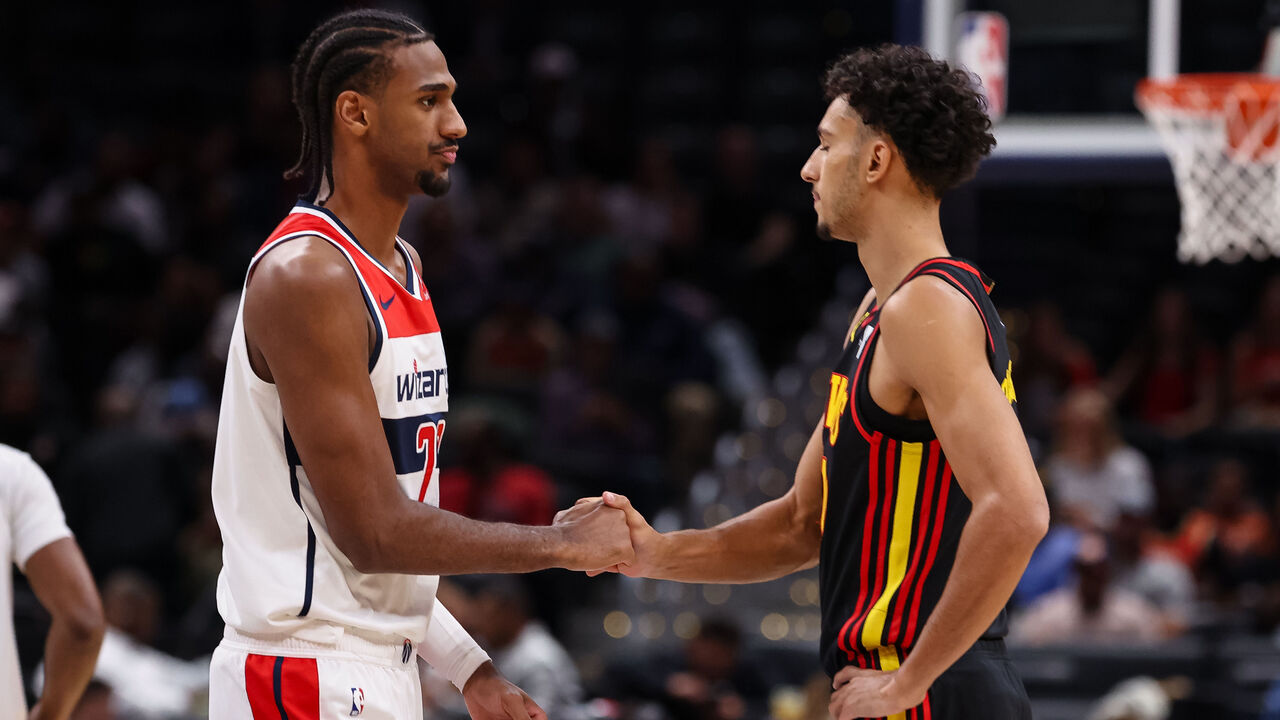
If you thought scouts and pundits were overreacting when they said the 2024 draft class was the worst in over a decade - and perhaps one of the worst ever - you should see it clearly now: it's as bad as advertised.
That doesn't mean there won't be a solid group of very good rotation players (and perhaps even a couple All-Stars) to emerge, but it definitely appears to be a class of future role players more than a class of stars.
Players like Ryan Dunn (28th overall pick), Tristan Da Silva (18th overall), and Raptors rookies Jamal Shead (45th), Jonathan Mogbo (31st), and Jamison Battle (undrafted) have handled themselves quite well. Spurs rookie Stephon Castle has earned Gregg Popovich's trust. Others, like Reed Sheppard, Donovan Clingan, and Dalton Knecht should thrive in time when opportunity arrives. But the top of the draft looks terrible, for the most part.
Top-two picks Zaccharie Risacher and Alex Sarr have combined to shoot 34.3% from the field. Rookie of the Year favorite Zach Edey is the leading rookie scorer right now, but his 11.1 points per game would be the lowest-ever mark for a leading rookie.
You could usually chalk up such early struggles to rookies simply getting up to speed with the NBA game, but that's unfortunately likely not the case this time around. - Casciaro
Running of the Bulls

Much like 3-point frequency, quickening pace once felt like a runaway trend, with the league average increasing for eight straight seasons between 2012 and 2020. And much like 3-point frequency, that trend line flattened out (or in this case actually dipped) in the ensuing years - until spiking again this season. League-wide pace still isn't quite back to where it was in 2019-20 (the fastest season since the rip-roaring 80s), but it's picked up quite a bit from where it was at last season, which was the slowest campaign in six years, per Basketball Reference.
The Bulls are the poster team for that uptick, leaping from 30th to fifth in transition frequency and from 28th to first in pace, with an increase of nearly 10 possessions a game. They've shaved a full second off their average time to shoot following an opponent made basket, and nearly a second and a half following a defensive rebound, per Inpredictable. They've also been a big part of the league-wide 3-point bump, jumping from 28th to fourth. The two changes go hand in hand, since Chicago is getting a ton of its threes in transition and semi-transition.
Dispensing with the methodical, mid-range-oriented DeMar DeRozan and bringing in the justifiably half court-averse Josh Giddey as a tempo-pusher has been a big part of the shift. But it's been a true team-wide mandate to get out in the open floor whenever possible. Everyone from Giddey to Coby White to Zach LaVine to Ayo Dosunmu to (when available) Lonzo Ball is either ripping and running or immediately looking up the floor for a hit-ahead pass after coming down with a board. Which happens a lot, because the Bulls lead the league in defensive rebound rate. No team's undergone a more dramatic stylistic overhaul.
But for all their ostensible modernization, the Bulls rank 27th in offensive efficiency after finishing 19th a season ago. And it's not like you can blame that on the variance they've invited by jacking more threes, since they currently rank sixth in long-range accuracy. Still, when you're a team that isn't going anywhere in the short term, there's something to be said for at least being fun to watch. And while the revamped process hasn't led to improved offensive results (yet), there's no denying Chicago's putting out a much more entertaining product than it has over the last couple years. - Wolfond
What's with all the fouls?
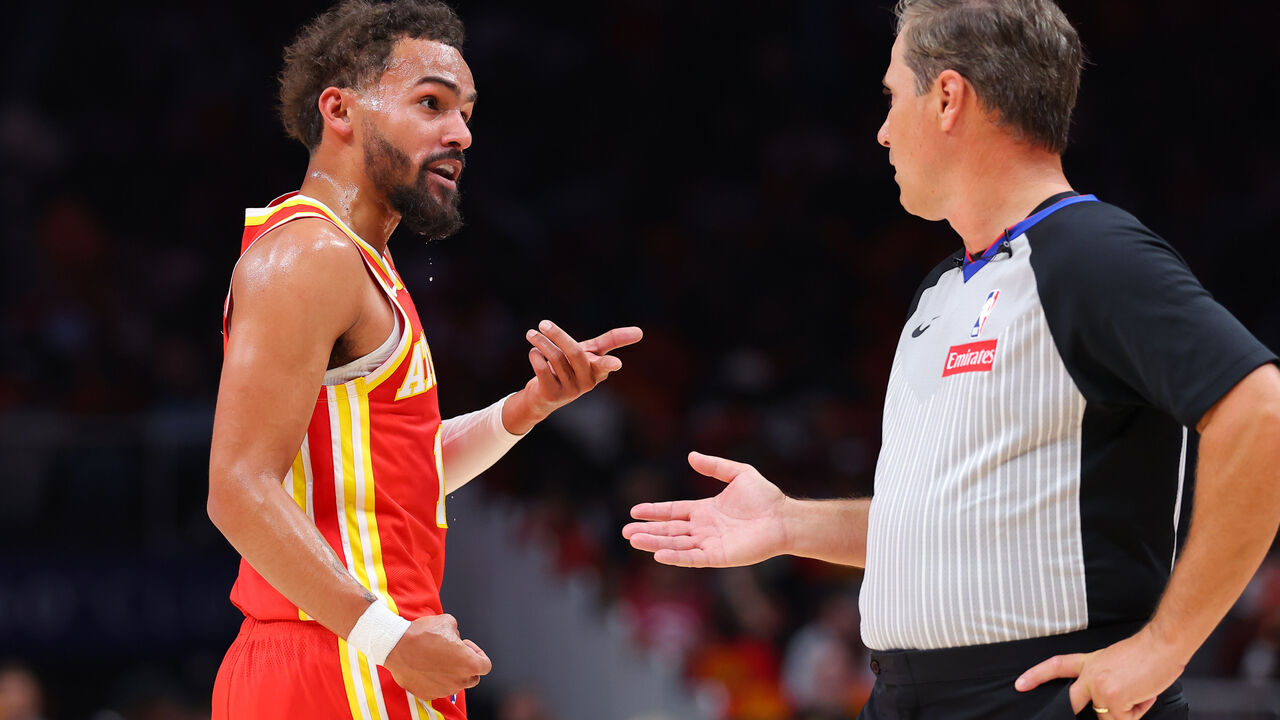
Despite all the hand-wringing in recent years about flopping and foul-baiting, the NBA's rate of fouls called and free-throws awarded had been on a steep downward slope. And that downward trend was expected to continue this season, given officials further swallowed their whistles midway through last season - when foul-baiting, non-basketball maneuvers, and defensive freedom of movement became points of emphasis - and that more shots are coming from 3-point territory than ever before.
So much for that. At 26.8 free-throw attempts per 100 field-goal attempts and 20.7 fouls per 100 team possessions, the league's average free-throw attempt rate and foul rates are on the rise, with the latter its highest in nine years. Davis (12) and Banchero (11.8) currently boast two of the top-20 marks ever when it comes to free throws per game. Will another midseason officiating adjustment be necessary?
Then again, it's interesting to note that scoring is actually down, despite a marked increase in 3-point volume, free-throw attempts, and offensive rebound rate across the league. Average offensive rating is down 2.1% year over year, from 115.3 points per 100 possessions last year to 112.9 so far this season. - Casciaro
HEADLINES
- GM Borgonzi to lead coaching search as Titans restructure front office
- Patriots face Dolphins as legal cases for Diggs, Barmore cast cloud
- AFC North title bets: Lamar, Rodgers square off in play-in game
- Steelers' Watt to return vs. Ravens following lung surgery
- Report: Blue Jays remain favorite to sign Tucker